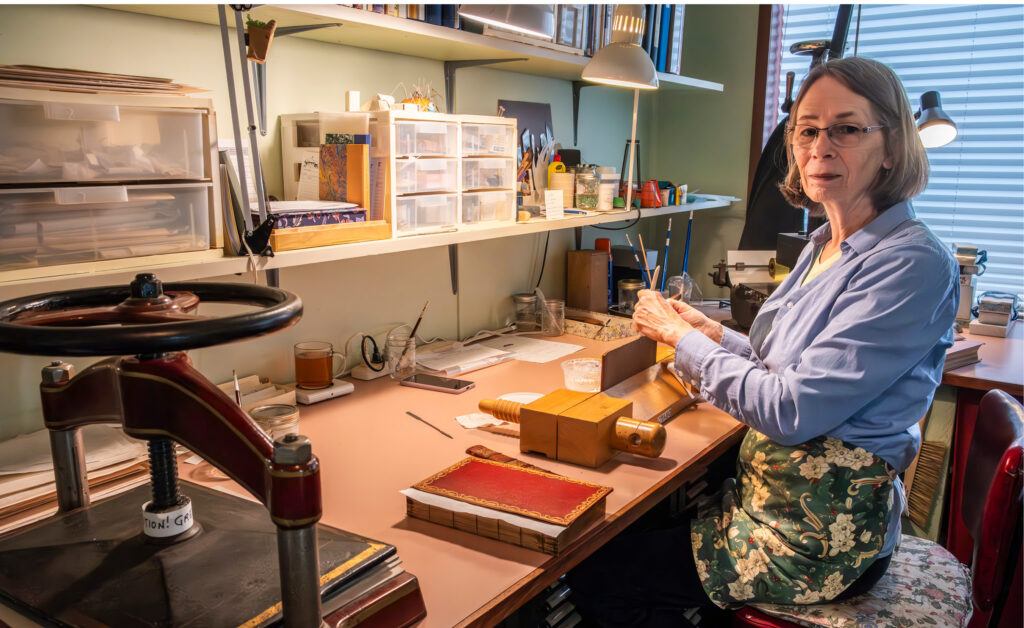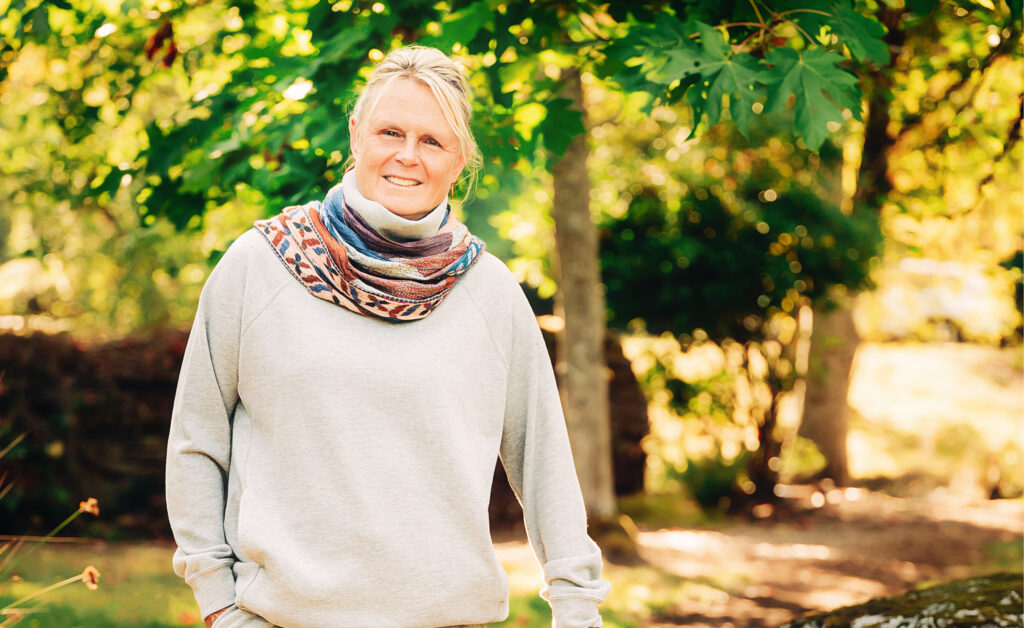by Jo Barnes | photos by Tanya Murchie –
Do you have a keepsake that evokes wonderful memories of your past? It might have monetary value, but what is more important is what it means to you personally. There are all kinds of family treasures that may be tattered or torn but have significant emotional value attached to them, and some of these are books.
Lorraine Butler of Meadland Bindery in Brentwood Bay can attest to the profound sentimental value of books, which daily inspires her to approach restoration work with integrity and high standards. “When a treasured book is repaired, it is emotionally valuable to the person who owns that book. When a customer values a book, I want to do the best I can and return it to them in a useable condition.”
Since 1989, Lorraine has been doing conservation and restoration of books including custom binding and paper repair of pages, documents, maps, and book illustrations.
After initial bench training which included rebuilding books structurally and creating new covers, Lorraine went on to take courses in restoring binding, paper treatments and paper repair. A longtime member of CBBAG (Canadian National Bookbinders and Book Artists Guild), she shares about the variety of projects she has done for the general public, rare book dealers, and book collectors alike. “I have worked with UVic Special
Collections including restoration work on some Shakespeare books, the City of Victoria Archives working on early records such as old directories, and the Greater Victoria Public Library where I worked with items from the local history collection such as early Victoria ship logs. In addition, I did some work for BC Royal Museum’s Gold Rush Exhibit.”
Regardless of the book, Lorraine approaches each one with care and dedication, an approach reflected in the words printed on each bookmark given to clients with their order. “The Restorers litany is printed on each bookmark,” she remarks. “It says ‘in conserving this book, I have tried to respect its provenance and character while making it possible for it to be read and handled within the limitations of its age’.”
This level of care and consideration brings rewards. “People are very grateful and very kind. I feel useful. It’s lovely to do something that is appreciated,” she says. “I found my life’s work.”
Lorraine has worked hard at honing her skills and achieved a reputable name in this field, but her initial entry into this field was completely unplanned. “I got into this line of work by chance,” she shares. “A bookbinder was wanting to take someone on in their bindery business. I was open to trying something new. I had an aptitude for working with my hands and fine motor skills. I started in 1986 and really liked the work.”
After three years working with this local bindery, another fortuitous opportunity came up, and she was able to pursue the trade independently. “There was an ad in the Times Colonist. The Queens Printer had hand binding equipment for sale. It was government surplus where you bid on items. I won the bid,” she relates. “With all of this equipment, I was able to start up my own business in November 1989.”
The work is detailed and labour intensive. It can take on average a week to complete each job, sometimes up to two weeks. Books can present different issues: the binding can be cracked or in pieces; spine missing; pages torn, tattered, wrinkled or missing; and illustrations loose. Lorraine takes into account the age of each book and the original materials and uses appropriate treatments and materials. “I use archival materials that are acid-free including wheat starch paste, Japanese papers, linen, and leather that is of conservation quality,” says Lorraine.
Over time, she has come to appreciate the quality construction of older books. “When I’m working on a book from 1575, it’s the same process as a 100-year-old book. But the older the book, the better the candidate it is to be repaired. The paper, rag paper and linen, is stronger, the joint is stronger and the leather is good quality.”
With the closing of many local bookstores, the popularity of ebooks and easy access to online publications, some would question the relevance and future of books. However, as Lorraine relates, there remains something unique and meaningful about a physical book.
“A tablet will never replace a book. There’s beauty in a book with its binding and illustrations. There is something tangible about holding a book in your hands. We are meant to touch and feel texture. There are so many nerve endings in our hands.”
While the contents of a book we hold can teach and inform, but the book itself can also be a gateway to our personal past and a family treasure for future generations to appreciate.
For those interested in getting a book restored or repaired, visit www.meadlandbindery.com.




